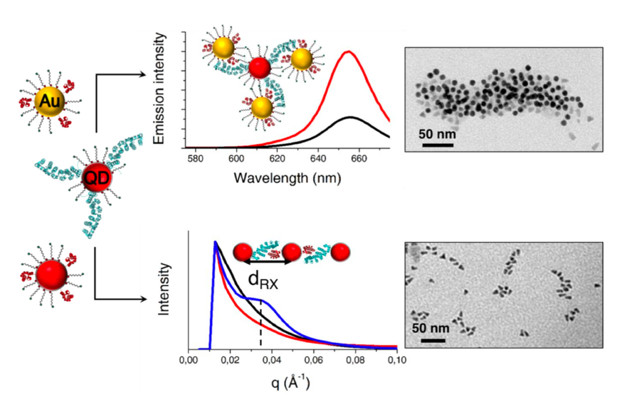Hybrid nanoparticles self-assembled superstructures

Giorno 31 ottobre 2019, con inizio alle ore 14:00, presso l'Aula B del DFA, su invito della Dr.ssa Maria Josè Lo Faro, la Prof.ssa Valerie Marchi (Department of Physics and Chemistry, University of Rennes I, and CNRS, France) terrà un seminario dal titolo Hybrid nanoparticles self-assembled superstructures.
Il seminario è sponsorizzato dalla Catania Section di EPS Young Minds.
Tutti gli interessati, in particolare gli Studenti del CdL Magistrale in Physics e i Dottorandi in Physics o in Materials Science and Nanotechnologies, sono invitati a partecipare.
Nel periodo dal 28 al 31 ottobre la Prof.ssa Valerie Marchi sarà in visita presso il DFA. È possibile fruire di corsi e svolgere attività di tesi presso l'Università di Rennes I nell'ambito dell'accordo Erasmus+ stipulato con il DFA.
Abstract. Self-assembled superstructures composed of metallic and semiconductor nanoparticles are key objects in nanoscience since they combine the chemical, optical, electronical properties of both types of nanoparticles and offer mesoscale functional interfaces with tailored optical collective properties. The inter distance in the hybrid emitter-plasmon colloidal assemblies is crucial to control the near-field coupling and optimize the optical response. In this respect, they have gathered an increasing interest from research groups worldwide in the last couple of years. The coupling of such nanoparticles with biomolecules is highly desirable and relevant for many aspects such as (i) high affinity and specificity of their molecular recognition properties to drive self-assembly, (ii), the rigidity of their well-defined 3D structure (iii) the incorporation of biological functionality thus opening opportunities for biological applications including biosensors and bioimaging. Here optically active hybrid nanostructures are constructed by coupling fluorescent quantum dots and plasmonic gold nanoparticles. The self-assembly is directed by the strong affinity between two artificial α-Repeat proteins that are introduced in the capping layers of the nanoparticles at a controlled surface density. The proteins have been engineered to exhibit a high mutual affinity, corresponding to a dissociation constant in the nanomolar range. The molecular recognition properties are conferred to the protein-functionalized quantum dots and gold nanoparticles as demonstrated by gel electrophoresis and Surface Plasmon Resonance technique. The structure of the large colloidal superstructures of complementary nanoparticles has been analyzed by transmission electron microscopy and X-ray scattering. The self-assembling process leads to a very well defined sub-10 nm interparticle distance that strongly affects the emission properties of the quantum dots in hybrid ensembles. Our results open the route to the design of hybrid emitter-plasmon colloidal assemblies with controlled near-field coupling and better optical response.